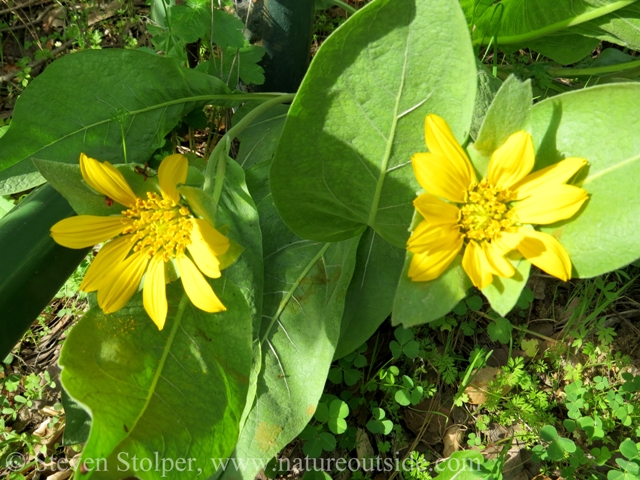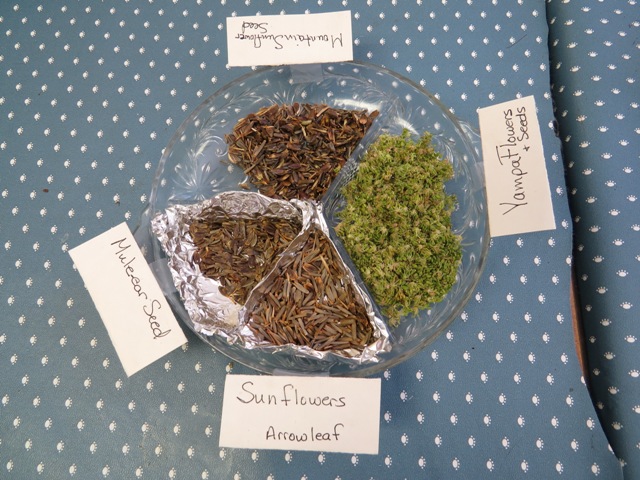Hi Everyone!
Native peoples in my area practiced the seasonal round. This is an annual cycle in the production of food. In spring, they climbed into the hills to harvest seeds from grasses and wildflowers. I assume ancient peoples in the UK did this as well?
I thought it might be fun to take a look at harvesting seeds for food. I put notes online that describe how I harvest seeds from sunflowers, plants in the Asteraceae family, when I am out foraging.
The most common plants near me are Mules Ears, Arrowleaf Balsamroot, and Mountain Sunflower. Here is a Mules Ears plant (Wyethia sp.):

There are several ways you can use the seeds. In the picture below, the seeds are for seasoning. They are consumed while still in the shell. In other cases, the seeds are parched and the nutmeats separated and consumed.

Here is a link with my method of harvesting sunflower seeds from wild plants (link).
Do you harvest seeds for food? If so, what is your method?
- Woodsorrel
Native peoples in my area practiced the seasonal round. This is an annual cycle in the production of food. In spring, they climbed into the hills to harvest seeds from grasses and wildflowers. I assume ancient peoples in the UK did this as well?
I thought it might be fun to take a look at harvesting seeds for food. I put notes online that describe how I harvest seeds from sunflowers, plants in the Asteraceae family, when I am out foraging.
The most common plants near me are Mules Ears, Arrowleaf Balsamroot, and Mountain Sunflower. Here is a Mules Ears plant (Wyethia sp.):

There are several ways you can use the seeds. In the picture below, the seeds are for seasoning. They are consumed while still in the shell. In other cases, the seeds are parched and the nutmeats separated and consumed.

Here is a link with my method of harvesting sunflower seeds from wild plants (link).
Do you harvest seeds for food? If so, what is your method?
- Woodsorrel


